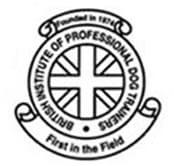Dogs may pull on the lead for a variety of reasons, not only do they want to explore their environment with their incredible senses of smell, hearing and sight but a dog may also pull on the lead through excitement. And let’s face it – we are much slower than our dogs!
Dogs don’t know they’re supposed to walk to heel because it’s something us humans want them to do, it’s not an innate dog behaviour. Unless we help teach Fido where we want him to be, very quickly we can train our dog to pull if we happily let him drag us down the road or pull back on the lead in an attempt to get him back into position. Traditional dog training would force the dog into position through lead corrections. However, this can be harmful to the dog; research shows that lead corrections or prolonged pressure can cause damage to the dog’s trachea, lead to headaches, neck and spinal injuries – and in extreme cases, even blindness.
The idea of going for a walk is that it is a pleasurable experience for you and your dog. So, the goal is for your dog to walk closely and happily by your side at the end of the lead; speeding up and down and stopping with you in harmony. To do this you have to teach our dog where you want him to be – by your side, and that has to be done without shouting, violence or force. There are many ways you can teach your dog to walk on a loose lead without the need of fancy equipment that proports to stop pulling instantly or using harsh methods to force the dog into position. All it boils down to is a bucket load of patience and consistency, as well as using positive reinforcement methods to help teach the dog.
So, if you’re experiencing problems with pulling, get in touch – we’d be happy to help. In the meantime, here are some top tips…
- To teach your dog good manners you must begin at home where there are less distractions and you can control the environment; even having the television on in the background can be a low level distraction for your dog when you’re asking for his attention and focus.
- Keep your training sessions short – just a few minutes at a time to ensure your dog doesn’t get overly tired, frustrated or bored.
- Get the dog used to seeing the lead being moved about to help reduce the anticipation that the lead equals ‘going for a walk’. Afterall, if your dog is highly aroused just by seeing the lead inside the house, how can you expect him to listen and focus onto you outisde the home.
- Work out what your dog finds highly motivating – use this to help gain his attention onto during training such as food a favourite toys and so on. Be aware that what one dog may like could be completely different for another. For example, sausage is often considered by us humans as a high value reward, but I know many dogs that aren’t that fussed with the stuff yet they will do anything for pieces of raw carrot or apple!
Happy training.
Learn more about our classes

Get Hanne's Book
Playing With Your Dog will help any dog owner work out the games that are best suited for their pet to play throughout his life, from puppyhood to old age. The book also shares some tricks for all ages, group activities, and recommended toys that dogs will enjoy.

























